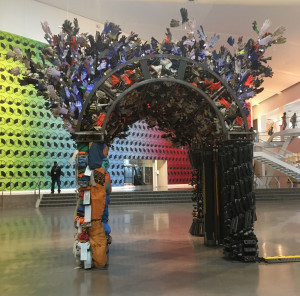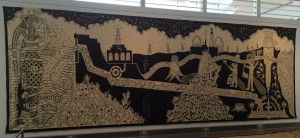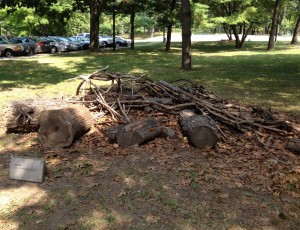Since the 70s, conceptual and performance art pioneer Mierle Laderman Ukeles mopped museum steps, shook the hand of every sanitation worker in New York and devised plans for the public to engage with the Fresh Kills Landfill on Staten Island, all in an effort to revalue the labor involved in maintaining our city, offices and homes. At the entrance to her 40+ year retrospective at the Queens Museum of Art, Laderman Ukeles plants this arch – made of donated work gloves and other items from local and federal agencies – as celebration of and homage to the work of keeping things running. (Through Feb 19th).


